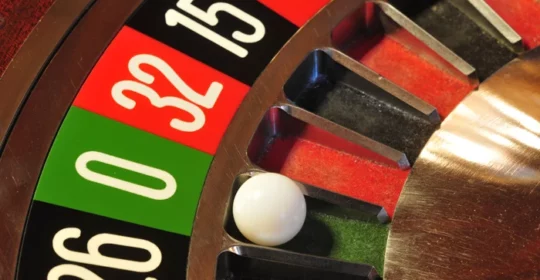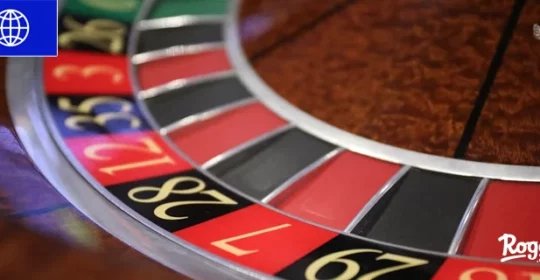When you approach the wheel, what’s going through your mind?
Roulette is one of the most popular casino games and one of the oldest games of chance in existence—millions of people have enjoyed watching the wheel turn!
The concept of roulette strategies has existed almost as long as the game itself.Countless tacticians have developed systems aimed at guaranteeing consistent profits.
In this article, we explore a variety of proven roulette systems and share expert tips to help you craft your own winning strategy.
Table of contents
How do roulette strategies work?
Every roulette strategy aims to boost winning chances and secure profits.
Some systems focus on simple bets, adjusting stakes based on wins or losses. Other strategies involve bets on single numbers, dozens, or columns.
A unique approach is Kesselgucken—German for “observing the wheel”—where players predict outcomes using observation, experience, and physics instead of mathematics. Perfect for visual learners!
All roulette strategies aim to reduce the casino's edge. Except for wheel-watching, they rely on probability theory to minimize risk. Strategies vary in expected returns and risk levels, but no strategy guarantees a win or profit.
To improve your game and explore these strategies, you should visit Richard Casino ( site not accessible to players in the 🇬🇧 ), which offers you an excellent opportunity to practise and refine your approach without risking your own money.
Roulette systems: The top options & how they work
Does a surefire roulette system exist?
👀 Below, we’ve listed popular roulette strategies, explaining their mechanics and weighing the pros and cons.
Except for Shotwell and Kesselgucken, these systems suit all roulette variants, with European or French roulette preferred for their low house edge.
Get your notepad and remember these!
1. Martingale
The Martingale strategy is a betting progression played on even-money bets.
If the wager loses, the player doubles the wager until a coup is successful. This way, the player achieves a basic wager as a profit and starts over with a new cycle.
Instructions
- Set your base wager (1% of your budget).
- Choose a table with high or no betting limits.
- Bet on red/black, even/odd, or low/high.
- If you win, restart with your base bet; if you lose, double your stake until you win.
Assessment
The Martingale strategy doesn't eliminate the house edge and requires a large budget for small profits.
Table limits are quickly reached, and a losing streak can lead to total loss. So, despite its popularity, we advise against using it.
2. Paroli
The Paroli strategy is the reverse of Martingale: double your bet after a win.
It aims to recover losses through consecutive wins, but the more you increase your bet, the higher the risk. This strategy is used on simple chances.
Instructions
- Set your base stake (1% to 5% of your budget).
- Bet on a simple chance.
- Progression: Double your stake if you win; if you lose, start a new round.
- Pre-determine the maximum number of stake increases.
- Collect winnings and begin a new round.
Assessment
The Paroli strategy is less risky and more profitable than Martingale, offering up to seven times the base stake in a triple Paroli cycle.
It thrives on winning streaks but struggles with alternating results, like red and black. Paroli is better suited for beginners than Martingale.
3. D'Alembert
This roulette strategy is simple, easy to play and particularly suitable for beginners.
The roulette winning system is popular because it does not require a lot of capital. It is not doubled, but only increased or decreased by one unit. However, the winnings with this system are also small.
Instructions
- Choose your basic bet as up to 5% of your budget.
- You bet on even chances. If you lose, you increase the bet by one unit, and if you win, you reduce it by one unit.
- The round is over when you get back to the basic stake and win this coup as well.
Assessment
The negative progression offers lower risk than Martingale, with table limits becoming an issue later. Though rounds can be longer, its slow progression makes it ideal for beginners.
4. Parlay
The Parlay strategy is a positive progression, where winnings are reinvested to reach a set profit target. Once the target is met, the round ends and you start fresh.
Instructions
- Set a base stake and profit target.
- Bet on a single chance. If you lose, restart; if you win, add the payout to your stake.
- Choose higher risk or spread the stake across multiple bets.
- End the round when you reach your profit target.
- Optionally, set a number series for stake adjustments based on wins or losses.
Assessment
The Parlay strategy is appealing because it allows for other bets, though it increases risk. With discipline, it’s one of the more effective betting progressions in roulette.
5. Labouchere
The Labouchere strategy sets a profit target, divided into a series of numbers.
For each bet, the first and last numbers of the series are added together. The target is reached when all numbers are crossed off.
Instructions
- Set a winning target (e.g., 15 base stakes) and divide it into a series of numbers (e.g., 1-2-3-4-5).
- Bet the sum of the first and last numbers in the series (e.g., 1 + 5 = 6).
- If you win, cross out the two numbers and continue.
- If you lose, add the stake to the end of the series.
- The round ends when all numbers are crossed off and the target is reached.
Assessment
The Labouchere system is flexible, allowing you to set both your profit target and the number of places in the progression.
However, you may risk exhausting your budget or hitting the table limit. In such cases, you can divide the series into smaller amounts or even experiment with zero as a place.
Labouchere is ideal for disciplined players with a mathematical approach.
6. Dozens grid
The dozen grid strategy, popularized by mathematicians and programmers, suggests that certain “hidden” numbers are favored by the random number generator after not appearing for a while.
The player identifies this hidden dozen and profits when these numbers are eventually called.
Instructions
- Observe coups without betting (in a casino or live online roulette).
- Identify the 12 “secret” numbers by crossing them off.
- Bet one unit on each number or on a dozen/column if the numbers align.
- If a “secret” number hits in the first or second coup, you win 35x the bet and walk away with a profit.
- If successful on the third coup, break even.
Assessment
Over many coups, all numbers are hit equally. In the short term, some numbers may appear more often, but this doesn’t predict future outcomes.
This strategy requires a high bet of 12 per round, demanding a large budget and offering a low chance of profit.
Roulette strategies – looking to the future
Roulette strategies can help you play smarter and manage your bankroll better. Whilst no system guarantees wins, they offer structure and improve your chances—so they’re always worth exploring.
Simple strategies like D’Alembert or Paroli are great for beginners, whilst Labouchere or Parlay suit more experienced players. Thoroughly investigate each before you make a final choice!
Remember, roulette is a game of chance. Play responsibly, enjoy the game, and focus on having fun, not just winning.
Read more top strategies and insider tips. Explore the Roger blog online here.





